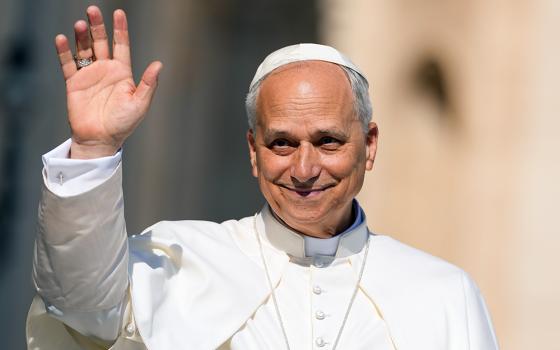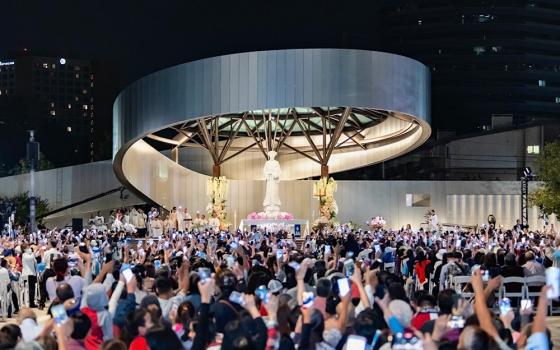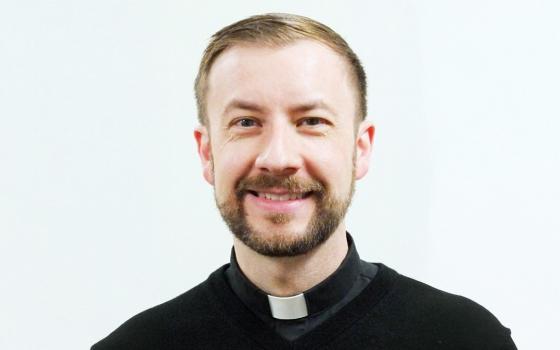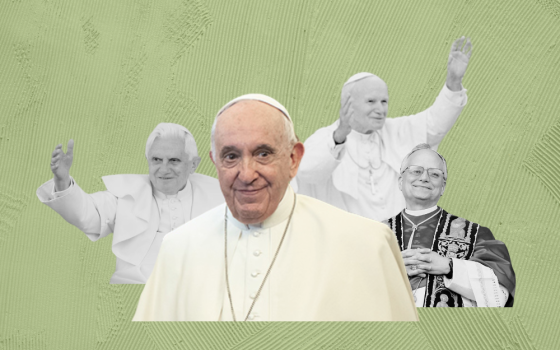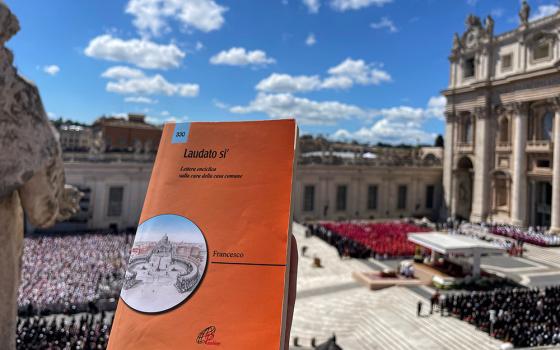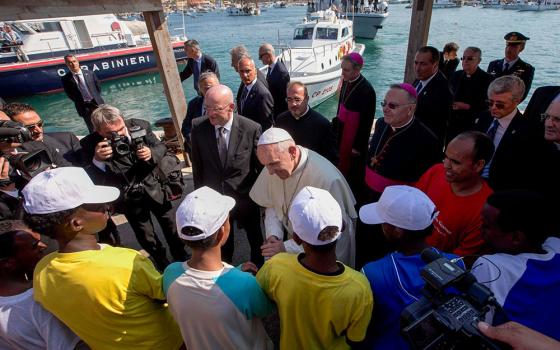
The name "Franciscus" is seen engraved on the tomb of Pope Francis inside the Basilica of St. Mary Major in Rome on April 27, 2025. (CNS/Lola Gomez)
Many mourners flocking to the Basilica of St. Mary Major to view the tomb of Pope Francis have pointed out one flagrant error: the spacing in the tomb's inscription.
In his will Francis left behind very simple yet specific instructions for his burial: "The tomb should be in the ground; simple, without particular ornamentation, bearing only the inscription: Franciscus."
However, as mourners viewed his tomb both online and in person, several noticed discrepancies in the kerning, or spacing, between each letter.
“Kerning” = the spacing between letters.
It’s supposed to read “FRANCISCUS”
Not “FR A NCISC US” pic.twitter.com/bgCwh5SqwE— MrCasey (@MrCasey62) May 3, 2025
"I wonder why the people of the Vatican, who are normally so strict about everything they do, did not take the time to check on something as basic as letter spacing," Mario R. Garcia, a design professor at Columbia University, told the National Catholic Reporter in an email.
Part of the error seems to be caused by the font choice itself. Times New Roman, the typeface used for the inscription, is a popular serif font. Serifs, the small decorative lines which extend each letter, create substantially varied letter widths, causing an uneven look to the spaces between each letter. Typically serif fonts require manual kerning to remedy the issue. According to typography experts, it appears that the etching was done electronically, meaning that no additional kerning was employed.
As a result, the inscription appears to read, "F R A NCISC VS."

The tomb of Pope Francis, inside the Basilica of St. Mary Major in Rome on April 30, 2025. (NCR photo/Olivia Bardo)
Garcia, who also designed the NCR website, said, "While I do not understand how those doing this work were not supervised, I hope that the error can be corrected."
"Those of us who work with typography everyday (designing websites, newspapers and magazines) count spacing as a trademark of good legibility," Garcia added.
A serif font is often used to assist with readability, the additional lines helping to guide the viewer's eyes along the word. Without the use of manual kerning, however, the opposite effect occurs.
Many have pointed out how strange it is that the Vatican utilized a machine to carve the inscription for "the people's pope," rather than the craftsmanship of human hands.
"Pope Francis deserves better," Garcia said.
Advertisement

